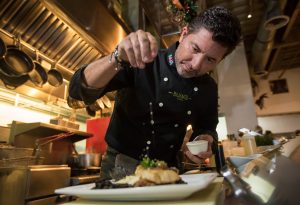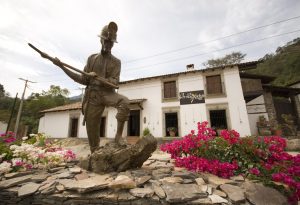In a recent article for Travel Weekly, Editor in Chief Arnie Wiesemann had the opportunity to sit down with Mexico’s new Secretary of Tourism, Claudia Ruiz Massieu, to discuss how she intends to grow Mexico’s tourism to become the third-largest contributor to the country’s economy (which is currently in fifth place). Journey Mexico is always a fan of Arnie’s interviews with Mexican officials because he asks straight forward questions to get the answers on what to expect– even with the president!
The article “Mexico tourism Q&A” focuses on getting the details of how the Secretary of Tourism, who is a lawyer by training and comes from a Mexican political family, plans on growing tourism revenues, including details on a train linking Cancun to Chichen Itza and Merida, a “tourism cabinet” chaired by Peña Nieto himself, and a marketing initiative that includes a re-branding of the Pacific Coast.
To read the full interview, click this link. Below is copied transcript of our favorite asked and answered question on the topic on how Ruiz Massieu plans to differentiate her strategies to draw tourists to areas of Mexico outside the resort and beach destinations — which Arnie points out that other officials have not been successful in doing.
TW: In the past, others who have tried to draw tourists to areas of Mexico outside developed resort areas have not succeeded on a large scale, in part because of the chicken-and-egg dilemma of which comes first: tourist interest or infrastructure? Hoteliers are reluctant to build, and airlines are reluctant to provide service to an area unless its popularity is proven, yet many tourists won’t come to a destination unless there’s good transportation and tourist-quality accommodations. Is this being addressed in discussions about bringing tourists beyond sun-and-beach?
Ruiz Massieu: Part of the rationale behind the tourism cabinet is precisely these types of issues. We were talking about this with the finance minister, president and other ministers one day when looking at some of the challenges facing tourism. And another minister said, “Well, it’s like the chicken and the egg.” And the finance minister said, “Well, when there’s a chicken and the egg, then it’s time for the government to step in and tip it in some direction.”
So, yes. For example, one of the things the president has decided is to make all of the federal monies that ministries traditionally administer to different areas be made more transparent, so things are better coordinated and understood.
For example, the agency for the development of indigenous people in Mexico traditionally has received lots of money to generate an ecotourism infrastructure within the communities that have an indigenous original population. But those decisions about how much, where and what type of spending didn’t necessarily involve the ministry of tourism. So the result was that a lot of this infrastructure and a lot of this federal money that was allocated to different programs within different states didn’t have the impact on tourism that it should have had.
By making it visible and tying it to the national tourism policy, we are going to be able to direct all of those resources to the places and type of programs that we, with our expertise, know makes the most sense.
So, coming back to the infrastructure question. We need infrastructure, and we do have lots of resources from the federal government that are there precisely to generate the kind of infrastructure that sometimes the private sector can’t get going by themselves.
It’s key that the government is participating. We’re also, for example, working with the development banking system to develop specific credit vehicles. And the president created the National Entrepreneurship Institute, which we’re working with to channel and target the kinds of projects that are commercially viable and make sense from a touristic point of view.
And that’s where [Mexico Tourist Board CEO] Rodolfo [Lopez-Negrete] comes in, with all of the tourism board’s knowledge about markets, about the type of product that we need to be developing and about the specific markets where we need to promote these new and different products.
TW: We have been talking a lot about process. Do you have specific projects planned to increase tourism?
Rodolfo Lopez-Negrete: Secretary Ruiz Massieu asked [the tourist board] to identify priorities from a regional perspective. The southernmost five states — Quintana Roo, Yucatan, Campeche, Chiapas and Tabasco — comprise the greatest archaeological wealth that we have. Without neglecting the rest of the country, this particular part of the country is one of the ones we believe has the greatest potential. Cancun is not only a wonderful destination, but can be a hub of distribution to spread tourists through the region — tourists who fly in from international markets. It’s an area that has cultural attributes comparable to China, Egypt and Greece.
But, of course, infrastructure has to go hand in hand with that.
Ruiz Massieu: It’s where Mayan culture was settled in Mexico, and it’s possible to integrate different experiences to complement the sun-and-beach experience that you get in Cancun or Riviera Maya. In fact, the president announced in January that the government is going to build a railway that’s going to link Cancun to Merida so you can go to Cancun, go to the beach, and then hop on a train and see archaeological and colonial sites on the way to Merida.
It’s going to be great. And we are going to also reinforce regional connectivity by air and highway. We’re investing heavily in infrastructure. The president just announced that the federal government is going to invest $25.8 billion this year in communications infrastructure, highways, rural highways, ports and airports, both enhancing capacity and evaluating projects for new airports and trains. So it’s going to be a really comprehensive policy that’s going to be linked to the infrastructure. We’re developing and upgrading what we need to make these destinations more accessible. The Yucatan Peninsula is an example of what we want to do with what we already have.
Looks like we have a lot to look forward to in the next 6 years of Ruiz Massieu’s term! We are happy to read that tourism is moving in the right direction and that goals are being set so that both tourists and tourism providers can continue to enjoy and explore the beautiful country of Mexico. Be sure to read the full interview on Travel Weekly “Mexico tourism Q & A” for more answers about what to expect in Mexico’s tourism, including the topic of safety and and security.





